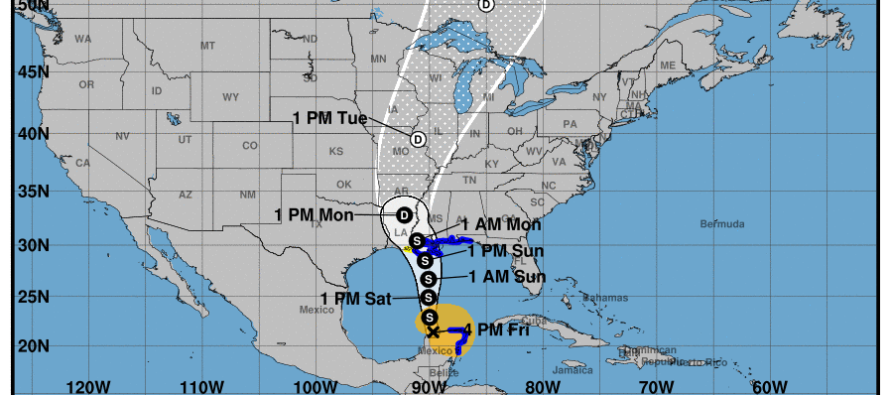Irrigation after Cristobal

Related Articles
- 2010 Row Crop Short Course Video Links 0
- Key Corn Verification Findings 1
- What to Expect from Later than Normal Corn Planting 2
Latest Tweets
It is often said here in the Mid-South that we are always 10 days from a drought! However, with the widespread and abundant rainfall received today from tropical depression Cristobal, irrigation is not really a primary concern until we rebound to more typical summertime weather next week. With irrigation season ramping up, Mississippi State University Extension Service has lots of expertise and programs available to assist with your needs. One tool that we are using to better assess soil moisture and schedule appropriate irrigation is Watermark™ sensors.
The Watermark™ sensors are tension based sensors measuring field water holding capacity. The normal range of operation of the Watermark ™ sensors is from 0 to 200 cb, with 0 cb signifying a soil saturated with water, and 200 cb representing dangerously dry soil. Remember, irrigation thresholds are 90cb-100cb prior to V14 in corn and 80cb-90cb prior to R3 in soybeans. Other factors, such as irrigation capacity, as well as crop growth stage may affect the appropriate moisture level for scheduling irrigation. For example, we would suggest using a trigger point approximately 20 cb lower for older center pivots with limited capacity, compared to other irrigation systems.
Proper irrigation timing involves the evaluation of the sensor values throughout the rooting zone. The rooting zone is defined as depth at which roots are utilizing water. If you have sensors placed 6, 12, and 24 inches deep within the soil profile, the initial readings immediately after installation may read much like this: 5, 3, and 0 cb. After a week of becoming acclimated to the soil conditions with no rainfall or irrigation events, the sensors may read 50, 40, and 0 cb. These fluctuating readings confirm the plant’s roots are utilizing water present at least 12 inches deep, but are not presently utilizing water beyond that depth. Although this effective rooting zone may change with time, in this example the entire rooting zone is in the top 12 inches of soil. Knowing that the rooting zone consists of the top 12 inches (100%) of the soil profile with a sensor at 6″ (50%) and one at 12″ (50%), calculating the irrigation initiation trigger is quite easy. As the effective rooting zone moves deeper, we must use an appropriate factor depending on the spacing between sensors at different depths.
For additional information on triggering irrigation and assistance, Dr. Gholson can be reached at 979 255 7018.






Let me tell You a sad story ! There are no comments yet, but You can be first one to comment this article.
Write a comment